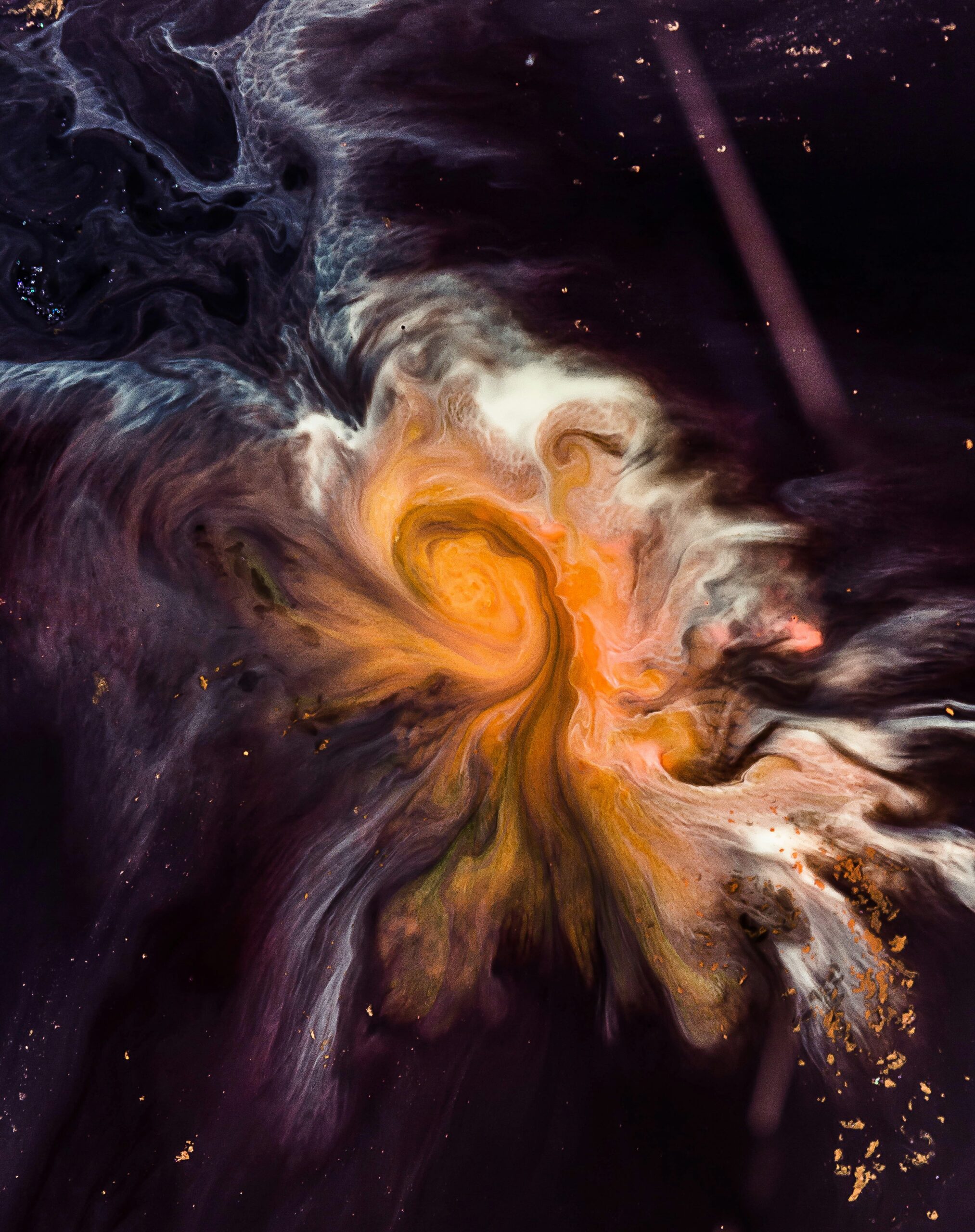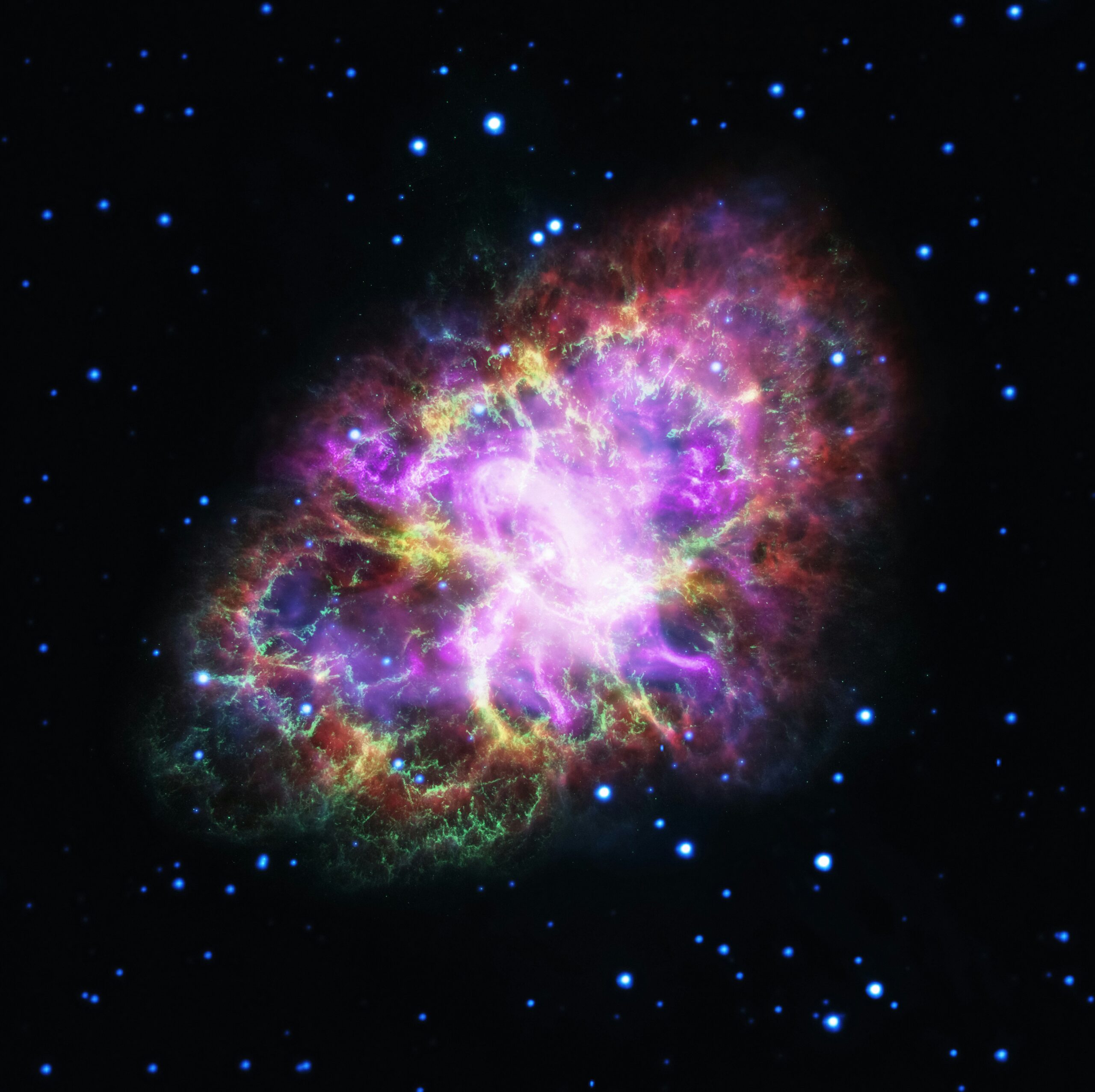Introduction to the James Webb Space Telescope
The James Webb Space Telescope (JWST) represents a monumental leap forward in the field of astronomy, designed to be the premier observatory of the next decade. As an international collaboration between NASA, the European Space Agency (ESA), and the Canadian Space Agency (CSA), the JWST aims to explore the universe’s most distant and ancient reaches, pushing the boundaries of our cosmic understanding.
Launched on December 25, 2021, the JWST brings advanced technological capabilities that surpass those of its predecessor, the Hubble Space Telescope. Among its most groundbreaking features are its large primary mirror, composed of 18 hexagonal segments made of ultra-lightweight beryllium, and its location at the second Lagrange point (L2), approximately 1.5 million kilometers from Earth. This strategic positioning allows the JWST to maintain a stable observation environment, shielded from the Sun’s heat and light by its innovative sunshield.
One of the JWST’s key missions is to study the formation and evolution of galaxies, stars, and planetary systems. With its powerful infrared instruments, the telescope can peer through cosmic dust clouds that obscure visible light, revealing phenomena previously hidden from view. This capability is crucial for investigating star-forming regions, like the Serpens Nebula, where unique jets of gas have been recently observed.
The significance of the James Webb Space Telescope extends beyond its technological marvels. It serves as a critical tool for answering fundamental questions about the universe’s origins, the nature of exoplanets, and the potential for life beyond our solar system. By providing unprecedented clarity and depth in its observations, the JWST is poised to revolutionize our understanding of the cosmos, making it an indispensable asset to the global scientific community.
The Serpens Nebula: An Overview
The Serpens Nebula, an intriguing region of interstellar space, holds a significant place in the study of star formation. Situated in the constellation Serpens, this nebula is approximately 1,400 light-years away from Earth. It is a part of an expansive molecular cloud complex known as the Serpens Molecular Cloud, which serves as a fertile ground for the birth of new stars. The nebula is notable for its rich composition, predominantly consisting of hydrogen gas, along with traces of dust and other elements that contribute to its distinct luminous appearance.
The discovery of the Serpens Nebula dates back to the early 20th century, with subsequent observations revealing its complex structure and dynamic processes. Various telescopes, including the Hubble Space Telescope (HST) and the Spitzer Space Telescope, have provided invaluable insights into this celestial region. These observations have identified numerous young stellar objects (YSOs) and protostars within the nebula, highlighting its role as a prolific star-forming site.
One of the most remarkable aspects of the Serpens Nebula is its dense core, where the conditions are ripe for the formation of new stars. The interplay of gravity, turbulence, and magnetic fields in this region creates a dynamic environment, leading to the collapse of gas and dust into protostars. As these protostars evolve, they emit jets of gas and outflows, which shape the surrounding nebula and contribute to the broader star-forming activity in the molecular cloud.
In addition to its scientific importance, the Serpens Nebula offers a visually stunning spectacle. The interplay of light and shadow, coupled with the intricate patterns formed by the gas and dust, provides astronomers and enthusiasts alike with a captivating glimpse into the cosmos. The ongoing study of this nebula, particularly with advanced instruments like the James Webb Space Telescope, promises to unveil further mysteries about the processes driving star formation and the evolution of stellar nurseries.
Discovery of Unique Jets of Gas
The James Webb Space Telescope (JWST) has made a groundbreaking discovery in the Serpens Nebula, identifying unique jets of gas that stand out from similar phenomena observed elsewhere in the universe. These jets, which are streams of ionized gas ejected from young stars, exhibit distinct characteristics that have garnered significant attention from the astronomical community.
What sets these jets apart is their unusual composition and behavior. Unlike typical protostellar jets, which are primarily composed of molecular hydrogen, the jets in the Serpens Nebula contain an unexpected mix of ionized metals and complex organic compounds. This composition suggests that the region’s chemical environment is considerably different from other star-forming regions. The presence of these materials could provide valuable insights into the processes of star and planet formation, offering clues about the initial conditions that lead to the birth of stellar systems.
Furthermore, the kinematics of these jets are particularly intriguing. Observations reveal that the jets in the Serpens Nebula exhibit variable velocities and complex morphologies, including helical patterns and intermittent bursts of activity. This erratic behavior contrasts with the more linear and steady outflows typically seen in other nebulae. The dynamics observed here may indicate interactions with magnetic fields or the influence of nearby stellar bodies, adding another layer of complexity to our understanding of these phenomena.
The JWST’s advanced capabilities have been crucial in capturing these detailed observations. Its infrared instruments have allowed astronomers to peer through the dense clouds of dust and gas that often obscure such features, providing unprecedented clarity and resolution. This discovery not only highlights the unique characteristics of the Serpens Nebula but also underscores the JWST’s potential to revolutionize our knowledge of the cosmos.
Scientific Significance of the Discovery
The recent observations by the James Webb Space Telescope, revealing unique jets of gas in the Serpens Nebula, hold substantial scientific significance. These jets offer a rare glimpse into the complex processes involved in star formation. The Serpens Nebula, a prolific star-forming region, is now under the spotlight as researchers delve into the intricate dynamics at play within this celestial nursery.
Jets of gas, often ejected from young stars in their early stages of formation, are crucial markers that help astronomers study the birth of stars. By analyzing these jets, scientists can gain a deeper understanding of the mechanisms driving star formation. The high-resolution data from the James Webb Space Telescope allows for a detailed examination of the speed, composition, and interactions of these jets, shedding light on the physics of accretion and outflow processes.
Furthermore, the discovery of these jets in the Serpens Nebula provides a valuable opportunity to study the interaction between young stars and their surrounding environment. These interactions are pivotal in shaping the evolution of the nebula and influencing the formation of subsequent generations of stars. The data gathered contributes to our broader understanding of how stellar nurseries evolve over time and the role of feedback mechanisms in star formation.
The implications of this discovery extend beyond just the Serpens Nebula. By understanding the processes at work in this specific nebula, astronomers can draw parallels to other star-forming regions across the universe. This enhances our knowledge of the universal principles governing star formation and the dynamic interplay within different nebulae. Additionally, it provides insights into the history and evolution of our own Milky Way galaxy.
Overall, the James Webb Space Telescope’s observations of gas jets in the Serpens Nebula mark a significant milestone in astrophysical research. They offer a window into the complex and fascinating processes that give birth to stars and shape the cosmos, enriching our understanding of the universe’s intricate tapestry.
Technological Advancements Enabling the Discovery
The discovery of unique jets of gas in the Serpens Nebula by the James Webb Space Telescope (JWST) is a testament to the sophisticated technological advancements that have been integrated into this groundbreaking observatory. The JWST, with its state-of-the-art instruments, has set a new benchmark in space exploration, allowing astronomers to delve deeper into the cosmos with unprecedented precision and clarity.
One of the key instruments that facilitated this discovery is the Near-Infrared Camera (NIRCam). NIRCam is capable of capturing high-resolution images in the near-infrared spectrum, which is crucial for observing celestial objects that are often obscured by interstellar dust. By penetrating these dense regions, NIRCam provides a clearer view of the intricate structures within the Serpens Nebula, including the jets of gas that were previously undetected.
Additionally, the Mid-Infrared Instrument (MIRI) played a pivotal role in this discovery. MIRI’s ability to observe in the mid-infrared range allows it to detect cooler objects and phenomena that are invisible to optical telescopes. This capability is particularly important for studying the jets of gas, as the mid-infrared observations can reveal details about their composition and temperature, offering insights into the physical processes driving their formation and evolution.
The Fine Guidance Sensor (FGS) and the Near-Infrared Spectrograph (NIRSpec) are also integral to the JWST’s success. The FGS ensures precise pointing and stability, enabling long-exposure observations without significant drift. This stability is crucial for capturing detailed images and spectra of faint objects, such as the jets of gas in the Serpens Nebula. NIRSpec, on the other hand, provides high-resolution spectroscopy, allowing astronomers to analyze the chemical composition and velocity of the jets with remarkable accuracy.
Overall, the combination of these advanced instruments and the JWST’s superior resolution and sensitivity has opened new avenues for exploring the universe. The discovery of the unique jets of gas in the Serpens Nebula underscores the transformative potential of the James Webb Space Telescope in expanding our understanding of the cosmos.
Comparative Analysis with Previous Observations
Previous observations of the Serpens Nebula, primarily conducted by the Hubble Space Telescope (HST), have provided substantial insights into this complex star-forming region. Hubble’s high-resolution imagery afforded astronomers a detailed look at the nebula’s intricate structures and stellar nurseries. However, the James Webb Space Telescope (JWST) has introduced a new dimension to our understanding with its advanced infrared capabilities, allowing it to penetrate dense cosmic dust that obscured Hubble’s view.
The data quality from JWST surpasses that from Hubble in several respects. JWST’s infrared sensitivity enables it to detect cooler objects and phenomena that were previously invisible. This capability is crucial in studying jets of gas and young stellar objects embedded within the Serpens Nebula. JWST has revealed finer details of these gas jets, including their velocity, composition, and interaction with the surrounding interstellar medium. Such detailed observations were unattainable with Hubble, which primarily operates in the visible and ultraviolet spectra.
One of the notable differences in the findings between the two telescopes is the discovery of complex organic molecules within the jets of gas, a feat achieved due to JWST’s spectroscopic instruments. These molecules provide critical clues about the chemical processes occurring in the early stages of star formation. Additionally, JWST’s higher resolution has enabled the identification of multiple, previously undetected protostars within the nebula, offering a more comprehensive census of the stellar population in this region.
The enhanced detail and new information provided by the JWST enrich our overall understanding of the Serpens Nebula. By comparing the data from both telescopes, astronomers can construct a more complete picture of the lifecycle of stars and the dynamic processes at play within star-forming regions. The integration of JWST’s findings with historical data from Hubble not only underscores the advancements in astronomical instrumentation but also propels forward our knowledge of the universe.
Potential Follow-Up Studies
The recent discovery of unique jets of gas in the Serpens Nebula by the James Webb Space Telescope (JWST) opens a vast array of potential follow-up studies. These studies are pivotal for expanding our comprehension of both the jets of gas and the Serpens Nebula’s intricate dynamics. One primary avenue for further research involves high-resolution spectroscopy. By employing this technique, scientists can delve into the chemical composition, velocity, and temperature of the jets, thereby revealing the physical processes at play within the nebula. This data can also assist in identifying the source of the jets, whether they originate from protostellar objects or other astrophysical phenomena.
Additionally, long-term monitoring of the jets is essential. Observing the jets over extended periods can provide insights into their variability and evolution. Such observations can be facilitated by the JWST’s advanced capabilities, allowing for periodic revisits to the Serpens Nebula. These temporal studies could uncover patterns or cycles within the jet activity, offering clues about the underlying mechanisms driving their formation and behavior.
Another promising area for follow-up research is the investigation of the surrounding molecular cloud. Understanding the interaction between the jets and the molecular cloud can shed light on the feedback processes that influence star formation within the nebula. This could involve mapping the distribution of dust and gas in the vicinity of the jets, utilizing both infrared and submillimeter wavelengths to capture a comprehensive picture of the environment.
Collaborative studies utilizing other observatories and instruments, such as the Atacama Large Millimeter/submillimeter Array (ALMA) and the Hubble Space Telescope, can complement the findings from JWST. By integrating data from multiple sources, researchers can construct a multi-faceted understanding of the Serpens Nebula, enhancing our theoretical models and simulations of star-forming regions.
In conclusion, the discovery of unique jets of gas in the Serpens Nebula marks a significant milestone in astrophysical research. The potential follow-up studies outlined here promise to deepen our understanding of not only the jets themselves but also the complex processes governing star formation and the evolution of nebulae.
Conclusion: The Future of Astrophysical Discoveries
The recent observations made by the James Webb Space Telescope (JWST) in the Serpens Nebula have been groundbreaking, revealing unique jets of gas that offer new insights into stellar formation and the dynamics of interstellar matter. These findings underscore the immense capabilities of JWST, which continues to push the boundaries of our knowledge and understanding of the cosmos.
Throughout this blog post, we have explored the significance of these newly detected gas jets and their implications for the study of young stars and their environments. By providing high-resolution images and detailed spectroscopic data, JWST has allowed astronomers to observe phenomena that were previously beyond our reach, offering a clearer picture of the processes that shape our universe.
The importance of the JWST in the future of astrophysical discoveries cannot be overstated. Its advanced technology and unparalleled observational power make it a pivotal tool for unlocking the mysteries of the cosmos. From studying the formation of galaxies to probing the atmospheres of exoplanets, the JWST is set to revolutionize our understanding of the universe on multiple fronts.
As we look to the future, the potential for new and exciting discoveries in the field of astronomy is immense. The JWST’s ability to observe the universe in unprecedented detail promises to uncover phenomena that we have yet to imagine, fueling the excitement and curiosity of scientists and enthusiasts alike. The journey of exploration and discovery is far from over, and with the JWST leading the way, we can look forward to a new era of astronomical insights and breakthroughs.


